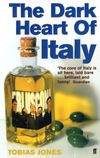On Thursday, 25 May, Ken Lay and Jeff Skilling, the top executives at Enron, were found guilty of fraud and conspiracy.For a novice like me, the riveting, revolting story of the meltdown of the 6th largest company in the US is rendered surprisingly clear by Bethany McLean and Peter Elkind in The Smartest Guys in the Room. As they tell it, Enron’s rise and fall were integrally connected to the flawed personalities of Lay and Skilling. Lay, midwestern son of a Baptist preacher, ‘grew up dirt poor’, but through willpower, and preaching the gospel of deregulation, he became CEO of the largest gas pipeline company in the US by 1985 – the newly formed Enron.It was Skilling who devised the business model that would turn Enron first golden, then to mud. Another lad of humble origins, he was an intellectually arrogant consultant when he came to Enron. He exploited their pipeline network to make Enron the country’s primary bro-ker of gas contracts. Enron made bundles of money and was feted as a model of innovative modern business.But Skilling was ‘a deer of ditches, not a digger of ditches,’ and cared little for the running of the company. Lay was even more distanced, enjoying the prestige, but not the responsibility, of his position. By the late ‘90s, after the spectacular failure of many of Skilling’s gambles, the company was in massive debt and desperately needed cash to fund the next ‘big enchilada’. To cover debts and create the illusion of profits, Lay and Skilling allowed Andy Fastow, Enron’s CFO, to bend then break accountancy rules. He transferred millions of dollars of debt away from Enron’s balance sheet to ‘structured finance vehi-cles’ with names like Raptors and JEDI – in effect, huge bets that Enron stock would not fall.While stock prices were rising, external accountants and merchant bankers were making too much money from Enron to blow a whistle, despite the in-creasing murkiness of their financial statements. By 2001, the Internet bubble had burst and canny traders in Wall Street started noting Enron’s peculiar accountancy. The stock plummeted – from $90 to $25 between August 2000 and September 2001. Skilling quietly sold shares and then resigned. Fastow’s bet backfired, and Enron filed for bankruptcy.Fastow and other finance wonks were convicted soon after the scandal broke, but Lay and Skilling’s trials have come later because their involvement was less direct. They did not engineer the accountancy fraud, but, as the jury has ruled, the chief executives oversaw or turned a blind eye to it, and therefore take key responsibility.
LIGHT MODE
DARK MODE
Most popular
The Florentine







